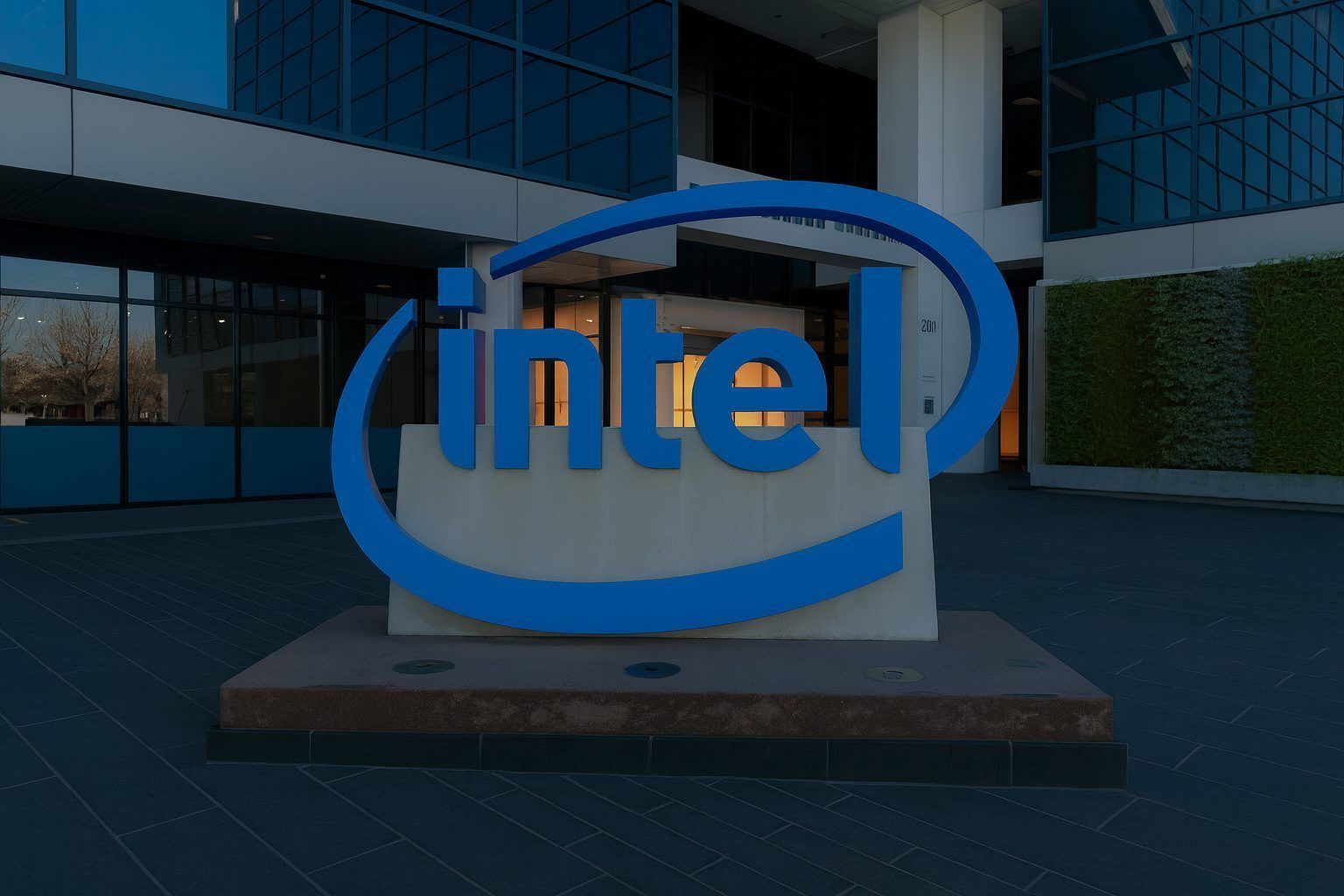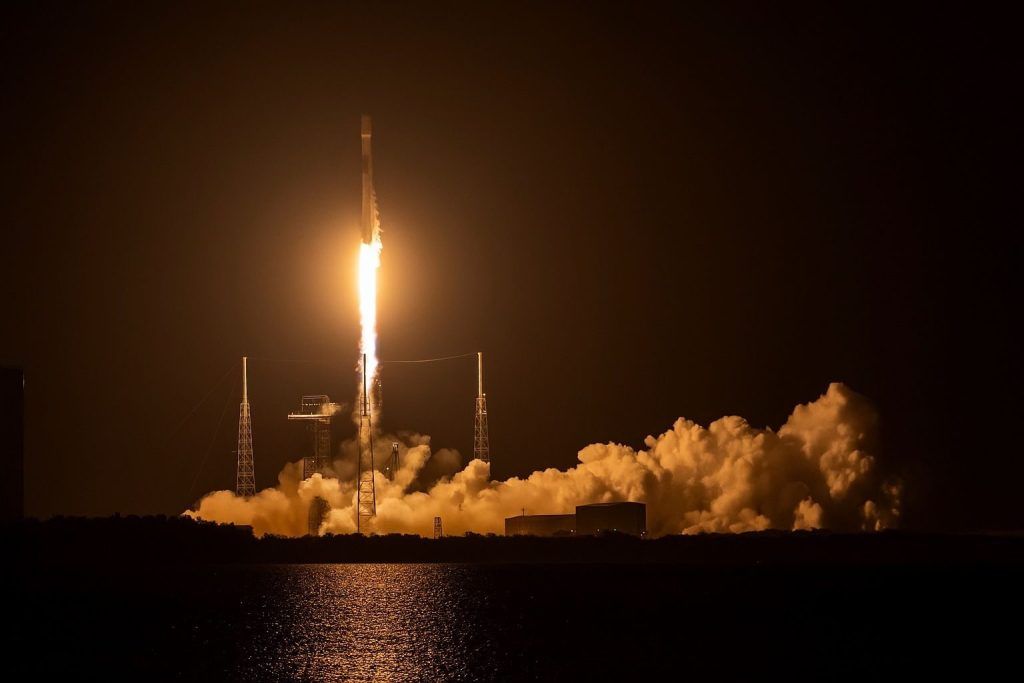Intel Corporation (NASDAQ: INTC) goes into Friday’s shortened post‑Thanksgiving session with its share price near the top of its 52‑week range, after a year defined by an aggressive turnaround, huge AI partnerships and heavy government backing — and now a high‑profile trade‑secrets fight with TSMC that could test investor confidence.
With U.S. equity markets closed on Thursday, November 27, for Thanksgiving and set to trade only a half‑day on Friday, November 28, traders in Intel stock will be digesting a potent mix of legal headlines, AI‑foundry milestones and still‑cautious analyst views before the opening bell. [1]
Intel stock snapshot heading into Friday’s half‑day
As of the close of regular trading on Wednesday, November 26, Intel shares finished around $36.81, after touching an intraday high near $37.24 on volume of roughly 54 million shares, below the recent average. [2]
Key context for Friday’s open:
- Year‑to‑date performance: Intel has staged one of the most dramatic comebacks in global semiconductors this year. From about $19.70 at the start of 2025 to just under $40 earlier this month, the stock has logged roughly a 103% year‑to‑date gain, according to analysis from Investing.com. [3]
- Recent week: A fresh burst of enthusiasm for AI and big tech has helped INTC climb about 5% this week, helped by optimism around Alphabet’s Gemini 3 AI model and a broader rebound in AI‑linked equities. [4]
- Position vs. range: Commentators note that Intel is now trading close to the top of its 52‑week range and comfortably above its 200‑day moving average — a level that often acts as a sentiment barometer for institutional investors. [5]
That backdrop sets the stage for a Black Friday session where even modest headline surprises could trigger outsized moves in a thin, holiday‑depleted market.
New legal overhang: TSMC’s trade‑secrets suit and Taiwan raid
The biggest fresh storyline for Intel shareholders this week is not a chip launch or a guidance tweak — it’s a potential intellectual‑property flashpoint with the world’s largest contract chipmaker, Taiwan Semiconductor Manufacturing Co. (TSMC).
What happened
- On November 25, TSMC said it had filed a lawsuit in Taiwan’s Intellectual Property and Commercial Court against former senior executive Lo Wei‑jen (also written Wei‑Jen Lo), claiming he violated the Trade Secrets Act and multiple confidentiality and non‑compete agreements. [6]
- TSMC alleges Lo, who retired earlier this year, accessed internal reports on advanced technologies — including 2‑nanometer and other cutting‑edge process nodes — and is now “highly likely” to have shared or used that information after joining Intel as an executive vice president. [7]
- Taiwan prosecutors have opened a probe; this week they raided two of Lo’s homes and seized computers and storage devices, while also moving to freeze some of his real‑estate holdings and shares. [8]
Intel’s response
Intel has pushed back strongly.
In a statement carried by Reuters and elaborated by The Verge, the company said it has “no reason to believe there is any merit to the allegations involving Mr. Lo”, stressing that Intel maintains policies that strictly prohibit the transfer of third‑party confidential information or IP and that it takes those commitments seriously. [9]
The Verge notes that:
- Lo previously worked at Intel decades ago before joining TSMC in 2004 and playing a major role in ramping its most advanced manufacturing nodes.
- TSMC’s lawsuit claims Lo breached non‑compete obligations and Taiwan’s Trade Secrets Act when he re‑joined Intel this fall, while prosecutors decide whether to press criminal charges. [10]
Why the case matters for INTC before the open
For now, the lawsuit is aimed at an individual, not Intel directly, and prosecutors have yet to file criminal charges. But the situation matters for Intel stock for three reasons:
- Reputational risk and perception of “borrowed” know‑how
Intel is trying to reposition itself as a trusted, U.S.‑anchored alternative to TSMC in the AI‑foundry race. A narrative — justified or not — that its turnaround is being fuelled by rival trade secrets could complicate political support and customer perceptions. - Regulatory and geopolitical angle
Taiwan’s prosecutors are invoking national‑security laws alongside trade‑secrets rules, underlining how sensitive leading‑edge chip technology has become. With the U.S. government now holding about a 10% equity stake in Intel, the case is inevitably viewed through a geopolitical lens as well. [11] - Litigation overhang
Even if Intel ultimately prevails, prolonged legal skirmishes can add uncertainty, legal costs and headline risk — all ingredients that can amplify volatility in a stock that has already more than doubled this year.
Heading into Friday’s open, traders will be watching closely for any new statements from TSMC, Intel, or Taiwanese authorities that could escalate or de‑risk the situation.
Turnaround scorecard: Intel’s Q3 2025 earnings in focus
Behind the legal drama, investors are still digesting Intel’s third‑quarter 2025 results, which marked a symbolic return to growth and profitability — albeit powered in large part by one‑off gains.
Headline numbers
According to Intel’s official earnings release and subsequent analysis: [12]
- Revenue: $13.7 billion (up ~3% year‑on‑year)
- GAAP gross margin: 38.2%, up sharply from roughly 15% a year earlier
- GAAP net income: $4.1 billion vs. a $16.6 billion loss in the prior‑year quarter
- GAAP EPS: $0.90 vs. a loss of $3.88 a year ago
- Non‑GAAP EPS: $0.23 vs. a loss of $0.46 a year earlier
- Q4 2025 EPS guidance: around $0.08, highlighting that the recovery remains fragile [13]
Tech‑industry coverage of the quarter emphasised that roughly three quarters of the net profit came from non‑recurring gains, largely tied to asset sales — including divesting a majority stake in programmable‑logic subsidiary Altera and part of Intel’s Mobileye interests — rather than from a fully healed core business. [14]
Segment performance
Intel’s internal restructuring has simplified its reporting, but several trends stand out: [15]
- Client Computing (PC business):
Revenue of $8.5 billion, up about 5% year‑on‑year, driven by stronger demand for higher‑end CPUs like Arrow Lake and Lunar Lake, and improving PC inventories. Operating margin in this segment climbed strongly, aided by a focus on richer product mixes rather than just unit volumes. - Data Center & AI:
Revenue around $4.1 billion, roughly flat versus last year. Tom’s Hardware notes that the group’s operating margin improved significantly, helped by growing deployments of Xeon 6 “Granite Rapids” processors tied to AI infrastructure refresh cycles. - Intel Foundry:
Reported revenue of roughly $4.2 billion (before intersegment adjustments), slightly down year‑on‑year, reflecting the heavy transitional costs of building out leading‑edge capacity while ramping external customers.
Overall, the quarter demonstrates real operational progress and cost discipline, but also shows that Intel’s turnaround is still in the early innings and very dependent on strategic funding and asset reshuffling.
Strategic capital: U.S. government, Nvidia and SoftBank re‑rate the story
A key pillar behind Intel’s stock re‑rating in 2025 has been an unprecedented wave of public‑and‑private capital flowing into the company as a strategic AI‑hardware asset.
According to Investing.com and Investopedia: [16]
- The U.S. government converted approximately $8.9 billion of CHIPS Act support into a 10% equity stake in Intel, effectively turning the company into a semi‑sovereign pillar of U.S. semiconductor policy.
- Nvidia committed $5 billion to Intel, agreeing to buy Intel stock at a discount and to co‑develop custom chips for data centers and PCs, where Intel will manufacture bespoke silicon that Nvidia integrates into its AI platforms and PC designs.
- SoftBank invested around $2 billion, targeted at Intel’s data center and foundry operations.
Intel’s CFO has said these inflows strengthened the balance sheet, lifted cash reserves and increased operational flexibility as the company ramps its next process nodes and fabs. [17]
For Friday’s session and beyond, this capital stack is a double‑edged sword:
- It mitigates solvency and capex‑funding fears that weighed on the stock in 2023–24.
- But it also raises the bar for execution: investors now expect Intel to translate public and private backing into competitive products and durable margins, not just one‑off accounting wins.
AI & foundry momentum: Panther Lake, Microsoft’s Maia 2 and new data‑center chips
Intel’s investment case increasingly hinges on whether it can become a credible AI compute and foundry powerhouse rather than just a legacy PC‑CPU vendor. Several recent developments are central to that narrative as traders line up for Friday’s open.
Panther Lake and the 18A process: yields finally on a normal curve
On November 21, Intel used an investor event to highlight its progress with Panther Lake, the next‑generation laptop CPU family built on its 18A manufacturing node. Reporting from Tom’s Hardware points out that: [18]
- Intel claims Panther Lake delivers roughly 50% more performance with about 30% lower power consumption versus previous laptop chips, aimed squarely at competition from AMD, Apple and new ARM‑based PC entrants.
- Early wafers are currently produced at Intel’s D1X pilot facility in Oregon; volume production is expected to shift to Arizona fabs in 2026 as yields improve and costs fall.
- Management says 18A yields are now improving at roughly 7% per month, a pattern consistent with industry‑standard ramp curves and a notable contrast with past Intel nodes that suffered erratic yield behaviour.
If accurate, this suggests Intel may finally be restoring its long‑criticised process‑technology execution — an important sentiment driver for INTC in 2026 and beyond.
Microsoft’s Maia 2: a marquee foundry customer
Tom’s Hardware also reports that Intel Foundry is on track to build one of Microsoft’s next‑generation Maia AI accelerators — often referred to as “Maia 2” — on the 18A or 18A‑P node, based on a report from SemiAccurate. [19]
Key implications:
- Microsoft would gain a U.S.‑based supply chain for at least part of its AI accelerator roadmap, diversifying away from TSMC‑centric production.
- For Intel, successfully manufacturing a large, near‑reticle‑sized AI chip for a hyperscale customer would be a powerful proof‑point that its 18A process is competitive on defect density and yields, not just on PowerPoint slides.
For traders, any further confirmation of that contract — or details on volumes and timelines — would likely be interpreted as a significant positive for Intel’s foundry ambitions.
New data‑center AI silicon and accelerators
Separate reporting indicates Intel has also introduced a new data‑center AI chip as part of its ongoing turnaround, positioned alongside its Gaudi accelerators and Xeon 6‑based platforms. The company is emphasising performance‑per‑watt gains and a broader portfolio of AI‑centric server offerings to win share from Nvidia and AMD in the data center. [20]
Combined with partnerships such as the Nvidia co‑development deal and rumoured multi‑year supply agreements with hyperscalers, this AI and foundry traction is a central reason many investors now see Intel less as a “value trap” and more as a leveraged call option on U.S. AI industrial policy. [21]
Short‑term sentiment: AI rebound vs. lingering skepticism
Even after a 103% rally, Intel stock is still a battleground among analysts and traders.
Analyst ratings and price targets
MarketBeat’s latest roundup, published after Wednesday’s move, notes that: [22]
- The consensus rating on INTC is “Reduce”, with only a small minority of covering analysts at “Buy,” a large majority at “Hold,” and a meaningful number still at “Sell.”
- The average price target sits around $34–35, below Wednesday’s close near $36.81, reflecting a view that much of the turnaround optimism is already priced in.
- Several banks including JPMorgan, Susquehanna, Mizuho and Barclays have raised targets over the past month, but often with neutral or underweight ratings attached, signalling caution rather than outright enthusiasm.
Separately, Watcher.Guru, citing CNN’s survey data, reports that only about 11% of analysts currently rate Intel a buy, around 70% recommend holding and roughly 19% suggest selling the shares. [23]
This week’s pop: AI trade comeback
Intel’s 5% gain this week hasn’t happened in isolation.
Investopedia notes that the broader AI and big‑tech complex has roared back in recent sessions: the Philadelphia Semiconductor Index jumped close to 5% on Monday, led by strong gains in Broadcom, Micron and AMD, while Alphabet’s Gemini 3 AI model was widely praised and helped fuel a renewed “AI trade” bid across U.S. markets. [24]
In that context, Intel’s move higher looks partly like beta to a resurgent AI sector, and partly like investors leaning into the company’s newfound role as a state‑backed AI manufacturing champion — even as lingering execution doubts keep many on the sidelines.
Key factors for Intel traders to watch on November 28, 2025
With liquidity likely thinner than usual during Friday’s half‑day, relatively small order imbalances can lead to sharp price swings. Here are the main catalysts and risk factors to watch around the open and through the session:
- Any escalation in the TSMC–Lo case
- New filings from TSMC, fresh comments from Taiwan’s prosecutors, or public clarification from Intel’s leadership could all move the stock. A perception that regulators might scrutinise Intel more directly would be a clear negative; conversely, signs that the case is contained to the individual could ease nerves. [25]
- Follow‑through in the AI and chip rally
- If the Philadelphia Semiconductor Index and AI bellwethers like Nvidia, AMD and Broadcom continue their rebound, Intel may benefit from sector‑wide risk‑on flows. A reversal in AI sentiment — for example, if investors decide the latest pop was just an “AI bubble” head fake — could quickly drag INTC lower. [26]
- Coverage and commentary on Intel’s 18A and foundry roadmap
- Any additional confirmation of Microsoft’s Maia 2 foundry deal, or further detail on Panther Lake yields and timing, could reinforce the view that Intel’s process roadmap is finally back on track. On the flip side, rumours of delays or yield issues would likely provoke a sharp reaction given how central the 18A narrative has become. [27]
- Options positioning and technical levels
- With the stock near recent highs, traders will be watching how INTC behaves around the mid‑$30s area, where recent resistance and analyst targets cluster. Heavier‑than‑usual options activity around round numbers could exacerbate intraday volatility as market makers hedge. [28]
- Macro headlines and Fed expectations
- The latest AI and tech rally has been supported not only by company‑specific news but also by growing optimism that the Federal Reserve may cut rates soon, according to recent market coverage. Any surprise macro data or Fed commentary that shifts those expectations could ripple quickly through high‑beta names like Intel. [29]
Bottom line
Heading into the November 28, 2025 open, Intel stock sits at the intersection of structural AI‑foundry optimism and short‑term legal and execution risk:
- The company has returned to profitability, strengthened its balance sheet with U.S. government, Nvidia and SoftBank capital, and is starting to show tangible progress on 18A and AI‑centric products like Panther Lake and Microsoft’s Maia accelerators. [30]
- At the same time, much of that story is already reflected in a triple‑digit year‑to‑date stock gain, a valuation above consensus price targets, and a still‑skeptical analyst community. Add in a high‑profile trade‑secrets lawsuit tied to TSMC, and the near‑term risk/reward looks finely balanced. [31]
For traders and investors positioning around Friday’s half‑day session, Intel is likely to remain high‑beta to every AI, legal and foundry headline, with sentiment swinging quickly as new information arrives.
Disclosure: This article is for informational and news purposes only and does not constitute financial advice, investment recommendation, or a solicitation to buy or sell any security. Always do your own research or consult a licensed financial adviser before making investment decisions.
References
1. www.investing.com, 2. www.marketbeat.com, 3. www.investing.com, 4. watcher.guru, 5. watcher.guru, 6. focustaiwan.tw, 7. focustaiwan.tw, 8. www.reuters.com, 9. www.reuters.com, 10. www.theverge.com, 11. www.theverge.com, 12. www.intc.com, 13. www.marketbeat.com, 14. www.tomshardware.com, 15. www.intc.com, 16. www.investing.com, 17. www.intc.com, 18. www.tomshardware.com, 19. www.tomshardware.com, 20. finance.yahoo.com, 21. www.investing.com, 22. www.marketbeat.com, 23. watcher.guru, 24. www.investopedia.com, 25. www.reuters.com, 26. www.investopedia.com, 27. www.tomshardware.com, 28. www.marketbeat.com, 29. www.investopedia.com, 30. www.intc.com, 31. focustaiwan.tw









